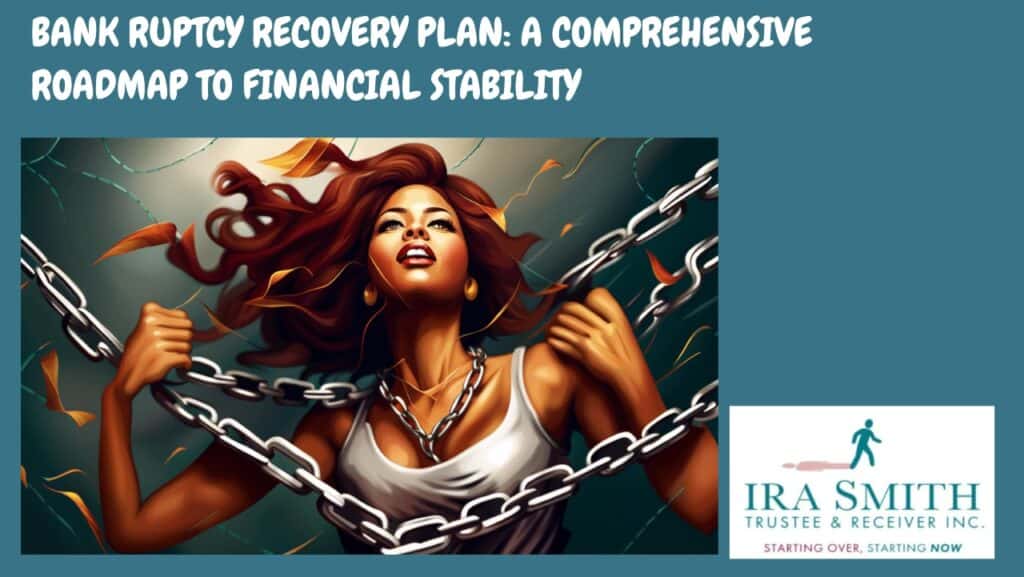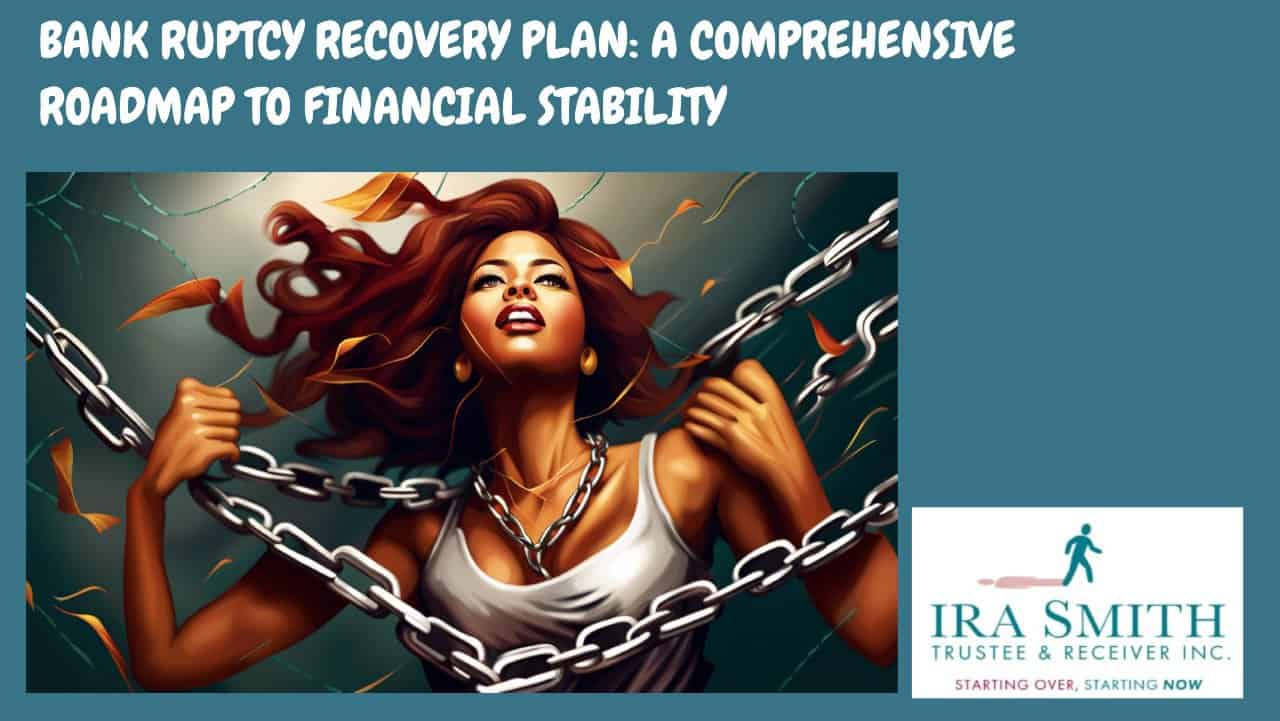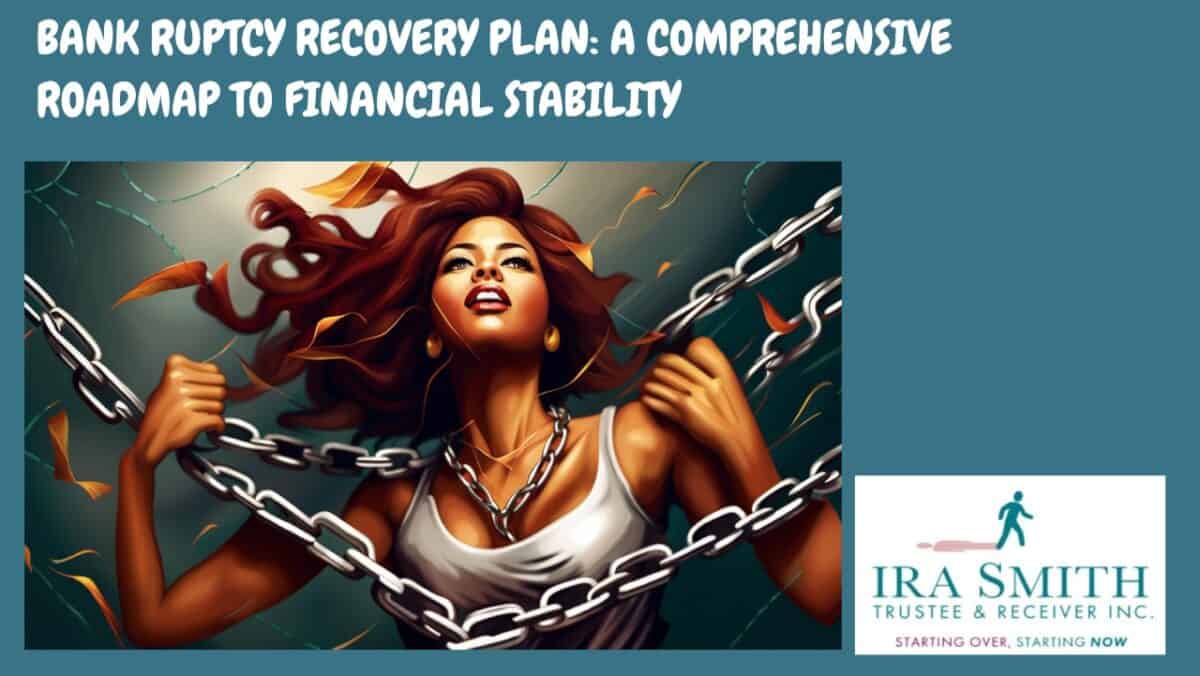Bank ruptcy: Introduction
I know it looks weird, but I have noticed through our software that people wanting to find out more about the Canadian bankruptcy process are searching for the two-syllable phrase “bank ruptcy“. I started to investigate this phenomenon. It turns out that individuals may often search for the term “bankruptcy” by entering “bank ruptcy” due to a phenomenon known as “typo-based search behaviour.” This behaviour occurs when users inadvertently type a word incorrectly while still approaching the correct spelling closely enough that their search engine or browser can suggest the accurate term.
In this instance, individuals may intend to find information about “bankruptcy” but mistakenly type “bank ruptcy.” The search engine or browser, recognizing the intent, may then offer “bankruptcy” as a suggested correction, which users can select to access the desired information.
Moreover, some users may be utilizing mobile devices or keyboards with non-standard layouts, which can contribute to typographical errors or misspellings. In such instances, search engines or browsers often retain the capability to discern the user’s intent behind the query and provide relevant search results.
It is also important to acknowledge that search engines, such as Google, are designed to improve user experience by interpreting and correcting common typing errors, thereby facilitating more effective information retrieval without necessarily teaching the person the correct spelling.
Bank ruptcy: What is Bankruptcy and Where Did the Word Originate?
The term “bankruptcy” has its origins in ancient civilizations, notably in Greece and Rome, where debtors had avenues for seeking relief from their creditors through various forms of debt forgiveness or restructuring. However, the modern legal framework and procedures associated with bankruptcy are a more recent development, emerging in Europe during the 16th century.
The word bank ruptcy is likely derived from the Italian two-word phrase “banca rupta,” which translates to “broken bench” or “broken table.” In this context, “banca” refers to a “bench” or “table,” while “rupta” means “broken.” This term was historically employed in medieval Italy to describe a merchant or trader who was unable to meet their financial obligations. Business was conducted at the benches or tables of the various merchants. Consequently, their “bench” or “table,” representing their business, was broken and rendered inoperative if they ran out of money.
In the 14th century, the Old French term “banqueroute” evolved from the phrase “banquer ost,” which followed the Italian meaning and further contributed to the development of the modern word and concept of bankruptcy as we understand it today.
The term evolved to include the concept of a legal process by which a person or business could be declared insolvent and their assets liquidated to pay off creditors. Being insolvent is the financial condition that can lead to the legal bankruptcy process to allow the honest but unfortunate debtor to have financial recovery.

Bank ruptcy: Are you ready to take control of your financial life and gain peace of mind?
Are you facing overwhelming debt and experiencing persistent financial stress and uncertainty? Do you aspire to liberate yourself from the burdens of debt and emerge more resilient and financially savvy? If so, you are not alone.
Millions of individuals worldwide are navigating similar challenges, and it is common to feel isolated in your struggle with debt issues. However, there is a solution. By identifying the underlying causes of debt and formulating a tailored recovery plan, you can take significant steps toward financial stability.
If you are prepared to regain control of your finances, overcome debt, and lay the groundwork for a more secure future, you have come to the right place. Let us embark on this journey to financial freedom from debt together.
Bank ruptcy: Reasons for Filing for Bankruptcy
Common financial difficulties
Consumers
Many Canadians who are considering a consumer proposal or personal bank ruptcy filing face similar financial challenges, including:
- High-interest debt.
- Job loss or reduced income.
- Unexpected expenses.
- Divorce or separation.
- High credit card debt.
- Student loan debt.
- Mortgage debt.
- Tax debt.
- Overextension of credit.
- Lack of budgeting and financial planning.
- Financial stress and anxiety.
It’s essential for individuals experiencing financial difficulties to seek professional help, such as credit counselling or speaking to a licensed insolvency trustee (formerly called a bankruptcy trustee), to address their debt and develop a plan for financial recovery.
Businesses
Common financial difficulties Canadian businesses who need to file either a financial restructuring proposal or bank ruptcy often exhibit common danger signals such as:
- Cash flow problems.
- High debt levels.
- Declining sales or revenue.
- Increased competition.
- Regulatory changes.
- Supply chain disruptions.
- Economic downturns.
- Over-expansion.
- Poor financial planning.
- High operating costs.
- Lack of diversification.
- Insufficient working capital.
- Seasonal fluctuations.
- Lack of access to capital.
- Poor management decisions.
- Industry-specific challenges.
- Cybersecurity breaches.
- Environmental liabilities.
- Lack of succession planning.
If a business faces financial struggles, it’s important to, it’s important to consult a licensed insolvency trustee. They can advise on turnaround strategies and help create a recovery plan to tackle these challenges effectively.
Impact of debt on individuals and businesses
Debt can significantly influence both individuals and businesses in various ways. For individuals, the burden of overwhelming debts may result in considerable financial stress, which can manifest as anxiety and, in severe cases, depression. When debt becomes unmanageable, it can hinder one’s ability to meet daily expenses, potentially leading to missed monthly payments, impaired credit scores, and a pervasive sense of despair.
Additionally, consumer debts can restrict an individual’s financial flexibility, making it challenging to make substantial purchases, assume new financial responsibilities, or pursue long-term financial aspirations. Moreover, the strain of financial difficulties can impact personal relationships, as stress related to finances often leads to conflicts and tension among family and friends.
Similarly, for businesses, the implications of debt issues can be equally challenging. Elevated outstanding debt levels can create cash flow issues, complicating a company’s ability to fulfill its financial commitments, including employee salaries, supplier payments, and tax obligations.
Furthermore, substantial debt can curtail a business’s capacity to invest in new opportunities, foster innovation, or expand operations, ultimately hindering growth and sustainability. Understanding debt’s effects is crucial for individuals and businesses to navigate financial challenges effectively and maintain long-term stability.
Bank ruptcy: The Bankruptcy Process in Canada
Obtaining a Free Debt Assessment
If you’re having difficulty keeping up with your debt payments and feeling stressed about your financial situation, you might want to seek help from a licensed insolvency trustee. These professionals are qualified to guide you through the often complicated process of managing debt. One of the key services they provide is a free debt assessment.
This assessment involves a thorough look at your finances, including your income, expenses, assets, and debts. The trustee will work with you to pinpoint the main issues contributing to your debt and help create a personalized plan to get you back on your feet.
The best part is that a free debt assessment from a licensed insolvency trustee is completely free, with no obligation to proceed with any debt relief options. This means that you can get a clear understanding of your financial situation and explore your options without incurring any costs or risks.
During the assessment, the trustee will also be able to advise you on the best course of action to take, whether that’s a debt consolidation loan, a debt management plan, or even bank ruptcy. By taking advantage of a free debt assessment from a licensed insolvency trustee, you can gain the clarity and confidence you need to take control of your finances and start building a brighter financial future.
Necessary Forms to Declare Bankruptcy
The bankruptcy procedure in Canada is a complex and intimidating process, but it’s essential to understand the necessary forms and procedures to navigate it successfully. In Canada, the necessary bankruptcy paperwork is to declare bank ruptcy is prepared by a licensed insolvency trustee, who will guide you through the process and ensure that all required documents are completed accurately and on time.
More than that, the insolvency trustee must be able to explain your options to you and help you feel comfortable that the option you choose, is the best one for your circumstances. The information that the insolvency trustee uses to prepare the forms comes from the initial intake form the licensed trustee provides to you. From that form, the Trustee can then prepare the required documents.
The main documents required to file either a consumer proposal or for bank ruptcy are:
- Either the consumer proposal or the assignment in bankruptcy.
- The statement of affairs outlines the assets and liabilities of the debtor and includes other important information for both unsecured creditors and the Office of the Superintendent of Bankruptcy Canada to consider.
- The debtor’s statement of monthly income and expenses.
- The notice to the debtor outlining their responsibilities in the insolvency process chosen, be it a consumer proposal or bankruptcy.
Your licensed insolvency trustee will provide you with these forms and guide you through the process of completing them accurately and submitting them to the Office of the Superintendent of Bankruptcy Canada. By completing these forms and following the necessary procedures, you can ensure that your bankruptcy is processed efficiently and effectively and that you can start rebuilding your financial future.
Role of Licensed Insolvency Trustees
Licensed Insolvency Trustees are essential participants in the Canadian debt relief landscape. These professionals possess specialized expertise in the field of insolvency, and their work is regulated by the Canadian government, which oversees the entire insolvency process and bankruptcy laws in the country. As the only individuals authorized by the federal government, insolvency trustees play a critical role in assisting both individuals and businesses as they navigate the often complex procedures associated with debt relief, including bankruptcy, consumer proposals, and financial restructuring.
Insolvency trustees serve as neutral third parties, allowing them to offer objective advice and support to those experiencing financial challenges. They collaborate closely with creditors to negotiate settlements and develop payment plans, and they can facilitate debt restructuring efforts that lead to a more sustainable financial future.
Engaging the services of a licensed insolvency trustee can provide individuals and businesses with valuable reassurance, as they can trust in the expertise and guidance of these qualified professionals during their journey toward financial recovery.

Advantages of Filing for Bank ruptcy in Canada
Filing for a consumer proposal, corporate restructuring or bank ruptcy for individuals or corporate bankruptcy in Canada can provide several advantages, including:
- Debt Relief: It provides a fresh start by discharging most of your debts, allowing you to start over financially.
- Protection from Creditors: An insolvency process provides automatic protection from creditors, which means they cannot pursue you for payment or take legal action against you.
- Stop Wage Garnishments: A consumer proposal or bankruptcy can stop wage garnishments, which is a legal process when judgment creditors take a portion of your paycheque to pay off debts.
- Stop Collection Calls and legal proceedings: Upon filing, you can stop collection calls and letters from creditors by referring them to your insolvency trustee. This gives you peace of mind and reduces stress.
- Impact on Credit Score: It is true that an insolvency process initially worsens a person’s credit score. However, it allows you to use certain techniques that we teach you to rebuild credit and over time improve your credit rating.
- Protection of Assets: A consumer proposal can protect all of your assets. Bankruptcy protects your exempt property. In many cases, it stops your home or car from being seized by creditors.
- Simplified Financial Life: The insolvency process simplifies your financial life by eliminating debt and providing a clear plan for moving forward.
- Professional Guidance: Insolvency trustees provide guidance and support throughout the process.
- Discharge of Debts: Over time, the insolvency process allows you to discharge most debts, including credit card debt, loans, and other unsecured debts.
- Fresh Start Perspective: Bankruptcy, a consumer proposal and financial restructuring all provide a fresh start, allowing you to start over and make a new beginning.
- Reduced Stress: A successful insolvency process reduces stress and anxiety caused by debt, allowing you to focus on rebuilding your life.
- Protection from Tax Debt: It protects you from tax debt which can be a significant burden for many individuals.
It’s important to note that bankruptcy is a serious legal process and should only be considered as a last resort. There are various debt relief options as alternatives to bankruptcy for you to consider before resorting to bankruptcy. It’s essential to consult with a Licensed Insolvency Trustee to determine which of the many options is best for your specific situation.
Bank ruptcy: Resources for Bank ruptcy Information
There are several resources available for bankruptcy information in Canada, including:
- Office of the Superintendent of Bankruptcy Canada: The Office of the Superintendent of Bankruptcy Canada is the federal agency responsible for overseeing the bankruptcy and insolvency system in Canada. Their website provides information on bankruptcy, consumer proposals, and other debt-relief options.
- Licensed insolvency trustees: They and their websites can They and their websites can provide guidance and advice on bankruptcy and other debt-relief options.
- Credit Counselling Services: Legitimate non-profit c services, such as the Credit Counselling Society, provide free or low-cost advice and guidance on managing debt and avoiding bankruptcy. Financial institutions: Many banks and credit unions provide resources and information about bankruptcy and debt relief options.
- Government Websites: The Government of Canada’s website provides information on bankruptcy, including a guide to bankruptcy and a list of licensed insolvency trustees.
Bank ruptcy Conclusion: Moving Forward After Bank ruptcy
Here is what I tell everyone about moving forward after bank ruptcy to have a successful and stress-free life:
- Take responsibility: Acknowledge that you made mistakes and take responsibility for your financial decisions. This will help you to learn from your mistakes and positively move forward.
- Continue budgeting: Part of the personal insolvency process involves financial counselling and proper budgeting. A budget shows you what you earn each month and therefore how much you have, after tax, to spend. Allocating your earnings over your essential needs first and sticking to that plan will keep you out of debt trouble in the future.
- Establish an emergency fund: It is important to try to save part of your monthly income to create an emergency fund that can pay for unforeseen expenses. This will help you reduce the need for debt when unexpected financial demands arise.
- Focus on rebuilding credit: Rebuilding credit takes time, but it’s essential to start building a positive credit history. Make on-time payments, keep credit utilization low, and monitor your credit report regularly.
- Support: Finally, It’s important to reach out for support from friends, family, or even a financial advisor. Having a solid support system can keep you motivated and focused on your goals.
I hope you enjoyed this bank ruptcy Brandon’s Blog. Do you or your company have too much debt? Are you or your company in need of financial restructuring? The financial restructuring process is complex. The Ira Smith Team understands how to do a complex restructuring. However, more importantly, we understand the needs of the entrepreneur or someone with too much personal debt.
You are worried because you are facing significant financial challenges. It is not your fault that you are in this situation. You have been only shown the old ways that do not work anymore. The Ira Smith Team uses new modern ways to get you out of your debt troubles while avoiding bank ruptcy. We can get you debt relief freedom.
The stress placed upon you is huge. We understand your pain points. We look at your entire situation and devise a strategy that is as unique as you and your problems; financial and emotional. The way we take the load off of your shoulders and devise a plan, we know that we can help you.
We know that people facing financial problems need a realistic lifeline. There is no “one solution fits all” approach with the Ira Smith Team.
That is why we can develop a restructuring process as unique as the financial problems and pain you are facing. If any of this sounds familiar to you and you are serious about finding a solution, contact the Ira Smith Trustee & Receiver Inc. team today.
Call us now for a free consultation. We will get you or your company back on the road to healthy stress-free operations and recover from the pain points in your life, Starting Over, Starting Now.
The information provided in this Brandon’s Blog is intended for educational purposes only. It is not intended to constitute legal, financial, or professional advice. Readers are encouraged to seek professional advice regarding their specific situations. The content of this Brandon’s Blog should not be relied upon as a substitute for professional guidance or consultation. The author, Ira Smith Trustee & Receiver Inc. as well as any contributors to this Brandon’s Blog, do not assume any liability for any loss or damage resulting from reliance on the information provided herein.



